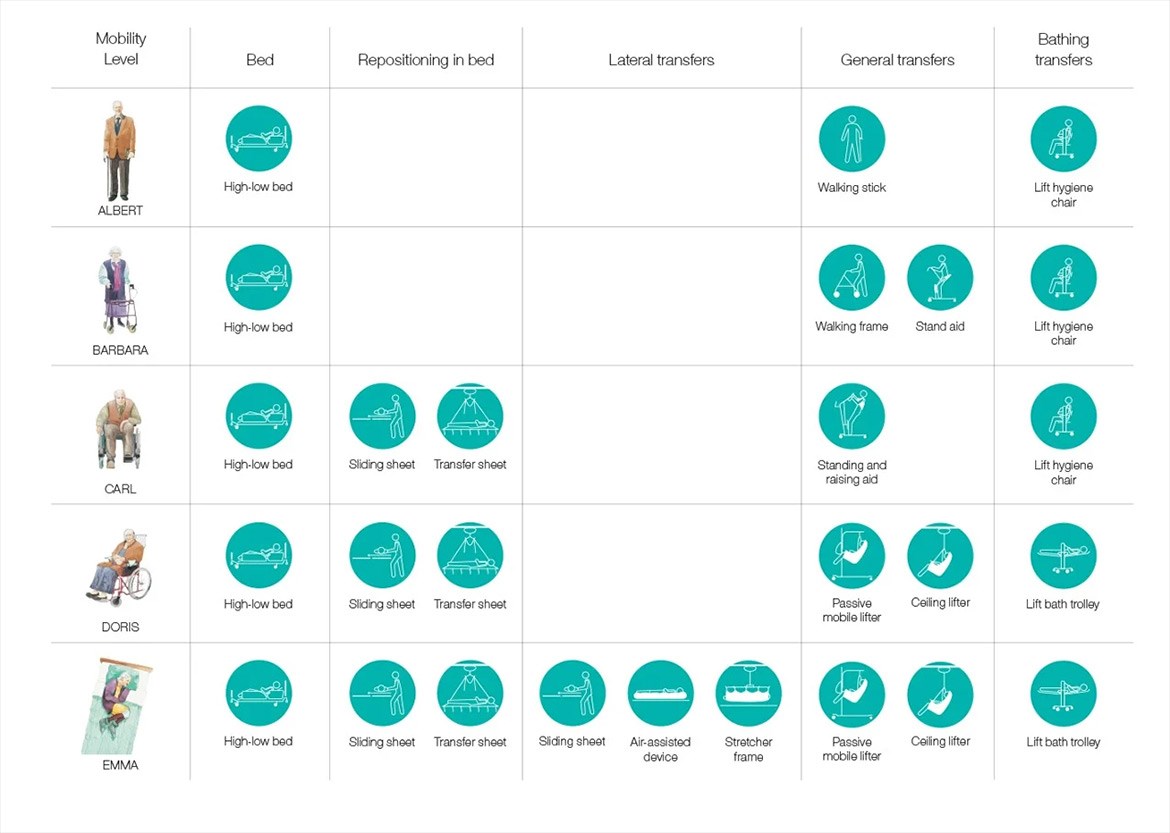Patient transfer tasks occur across multiple healthcare settings and are often high risk activities for both caregivers and patients. Risk of patient and staff injury has led to the development of global Safe Patient Handling programmes. An aspect of these programmes is the provision of medical devices such as patient transfer equipment to assist in the common transfer tasks.
So how do you choose the right transfer device based on a patient’s level of mobility? Learn how in this article:
How do caregivers choose a transfer device?
The patient’s level of mobility is key when choosing appropriate aids and planning for the right amount of space. As the patient’s mobility decreases, the number of aids and necessary space increases accordingly.
It is particularly important to select equipment that continuously encourages the patient to use all residual physical function and to stretch their ability, thus maintaining a greater degree of independence and mobility.

Different transfer devices for different residents
For example, we can conclude that with Albert’s mobility level there is little necessity to apply any transfer device. Furthermore, a patient with Barbara’s mobility may require a: non-powered sit to stand aid while a patient with mobility level of a Carl most often requires a powered sit to stand aid also used for early mobilisation and rehabilitation. Patients in healthcare facilities with limited or no mobility such as a Doris or Emma will require a floor lifter or a ceiling lift.
Post time: Feb-03-2023


